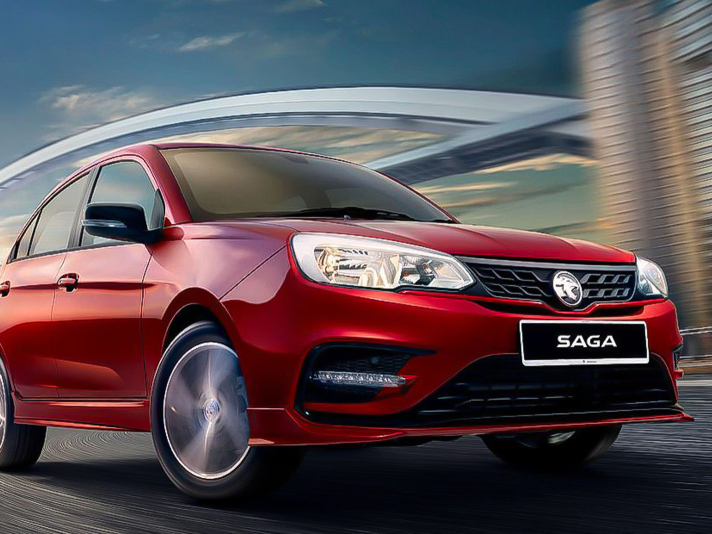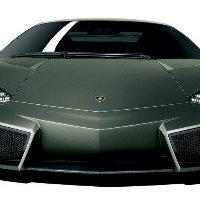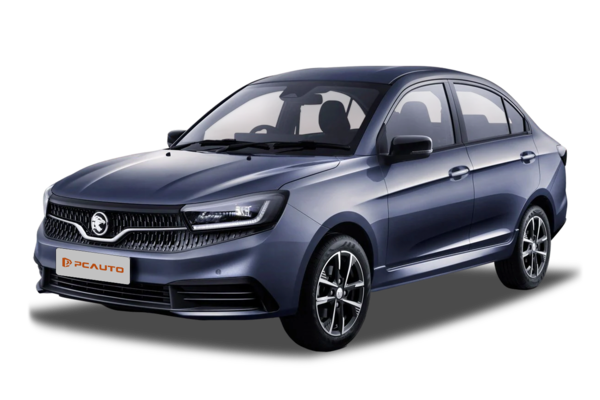Q
how to reset proton saga radio
If you need to reset the radio in your Proton Saga, here's how you'd typically do it: First, turn the ignition key to the ACC position. Then, press and hold the radio's power button for about 10 seconds until you see a "reset" or "restore factory settings" prompt on the screen. Confirm it, and the radio should reboot and go back to its default settings. This method works for the stock audio systems in most Proton Saga models.
If that doesn't fix things, it's a good idea to check your owner's manual or hit up a Proton authorized service center for help—different model years might have slight variations in the steps. Resetting the radio is a common troubleshooting trick for issues like lost station presets, wonky Bluetooth connections, or the system freezing up. Keeping your car's electronics maintained regularly can also help the radio last longer.
For Saga owners who want to get more out of their sound system, take some time to explore the audio input options it supports—like USB, AUX, or Bluetooth. These features can really up your in-car entertainment game. Just remember, try not to disconnect the power too often to avoid losing system data.
Special Disclaimer: This content is published by users and does not represent the views or position of PCauto.
Related Q&A
Q
What is the fuel consumption of the 2018 Holden Spark?
The 2018 Holden Spark is a budget-friendly city car that delivers fuel economy well-suited for Malaysian urban commuting. According to official figures, the manual transmission variant returns a combined fuel consumption of around 5.4L/100km, while the automatic version is slightly higher at approximately 5.8L/100km. Real-world fuel usage may vary slightly depending on driving habits, road conditions, and air conditioning usage. Powering this car is a 1.4-liter four-cylinder engine, offering smooth performance and low maintenance costs—ideal for budget-conscious young drivers or as a second family car. Given Malaysia's hot climate, regular maintenance of the fuel system and cabin air filter is recommended to maintain optimal fuel efficiency. Additionally, RON95 petrol is sufficient for this vehicle; there's no need for higher-octane fuel. For consumers prioritizing fuel efficiency, other models in the same segment like the Perodua Axia or Proton Saga are also worth considering, as they’re equally known for their economical nature. However, the final choice should come down to personal preference and test drive experience.
Q
What is the fuel consumption of Proton Saga 2018?
The official fuel consumption figures for the 2018 Proton Saga are 5.6 to 6.0 liters per 100 kilometers (exact numbers vary based on driving conditions and transmission type). It's powered by a 1.3-liter VVT engine paired with either a 4-speed automatic or 5-speed manual gearbox. This budget-friendly sedan delivers a balanced performance in both city and highway driving, making it ideal for daily commutes.
Fuel efficiency is influenced by several factors, including driving habits, road conditions, and vehicle maintenance. To keep fuel economy at its best, it's a good idea to regularly check tire pressure and maintain the engine properly. As a homegrown Malaysian brand, Proton's Saga lineup has always been known for great value and low running costs. The 2018 model also got upgrades to its sound insulation and suspension system, which boosted ride comfort.
If you want to squeeze even more efficiency out of it, try accelerating smoothly, cutting down on sudden braking, and using the air conditioning wisely. These simple habits can help get your fuel consumption closer to those official numbers.
Q
What engine is in the Proton Saga 2018?
The 2018 Proton Saga is powered by a 1.3-liter CamPro VVT naturally aspirated four-cylinder engine. This engine features Variable Valve Timing (VVT) technology, which optimizes intake efficiency at different engine speeds to boost fuel economy and performance. It delivers a maximum output of 94 horsepower and peak torque of 120 Nm, paired with either a 5-speed manual or 4-speed automatic transmission—perfect for city driving and daily commuting needs. As an entry-level sedan from Malaysia's homegrown brand, the Proton Saga has won over many family users with its affordability and reliability. While the engine isn't the most cutting-edge tech-wise, it excels in low maintenance costs and durability, making it well-suited for Malaysia's road conditions and climate. Developed in collaboration with Lotus Engineering, the CamPro engine series has undergone multiple upgrades, resulting in significant improvements in smoothness and fuel efficiency. For budget-conscious buyers seeking a dependable runabout, the 2018 Proton Saga is a solid pick.
Q
How much does it cost to maintain a Proton Saga 2022?
Based on Proton Saga 2022's official maintenance guidelines and real-world conditions in the Malaysian market, the annual upkeep costs for this car typically range from RM800 to RM1,200, though this figure can vary significantly depending on your annual mileage and the specific services required. Of course, this depends heavily on your mileage and the specific services you opt for. For regular servicing – think oil changes, oil filter replacements, and the basics – you're looking at around RM200 to RM300 per session. When it comes time for a major service, which might involve changing brake fluid, transmission oil, and other key components, expect to shell out between RM500 and RM800.
Being a homegrown Malaysian brand, Proton Saga benefits from relatively affordable零部件 prices and an extensive network of service centers, which definitely helps keep long-term ownership costs in check. Sticking to regular maintenance isn't just about prolonging your car's lifespan; it's crucial for keeping you safe on the road too. We always recommend following the maintenance manual to the letter and choosing authorized Proton service centers – that way, you're guaranteed genuine parts and professional expertise under the hood. And if you're watching your wallet, keep an eye out for Proton's occasional service promotions; they can help you trim those costs even further.
Q
How is the ride and handling of the 2022 Proton Saga?
The 2022 Proton Saga keeps the brand's focus on affordability and practicality when it comes to driving feel and handling. The overall setup leans towards comfort, making it a solid fit for Malaysian city roads. It uses a MacPherson strut front and torsion beam rear suspension, which does a decent job soaking up small bumps and road imperfections. Sure, there's noticeable body roll when taking corners at speed, but that's pretty standard for this class of car. The steering is light and easy, even for female drivers, and the CVT gearbox is much smoother than the old 4AT it replaces – though it does feel a bit slow to respond when you hit the gas hard.
One thing that stands out is the Saga's 145mm ground clearance, which gives it an edge when dealing with those common unpaved or rough patches you find around Malaysia. On the safety front, it comes standard with ABS+EBD and dual airbags, while higher trims add stability control – that's pretty competitive for the price point.
The 1.3L engine isn't going to win any drag races, but with 92 horsepower pushing around a car that barely tips the scales over a ton, it's more than enough for zipping around town. The official fuel consumption is 5.6L/100km, so it's easy on the wallet too.
For first-time buyers on a budget, the Saga's well-rounded package, combined with Proton's widespread after-sales network across the country makes it a really compelling choice for an entry-level sedan. If you spend a lot of time stuck in traffic, you'll definitely appreciate that comfortable suspension setup.
Q
What is the warranty on the 2022 Proton Saga?
The 2022 Proton Saga comes with a solid 5-year or 150,000 km factory warranty (whichever comes first), covering key components like the engine and transmission. The anti-rust warranty stretches to 7 years with unlimited mileage. This warranty package is pretty competitive in Malaysia's compact car segment and should help keep long-term ownership costs in check for drivers.
Important to note though – to keep that warranty valid, you've gotta stick to regular servicing at authorized Proton service centers. Skipping that could void your coverage, so make sure you hold onto all those service records, folks. On top of that, Proton throws in 24-hour roadside assistance for extra peace of mind when you're out and about.
Malaysia's hot and rainy weather can really test a car's durability, so going for a model with a lengthy warranty just makes smart sense. Other local players like Perodua also offer similar long-haul warranty deals, so it's worth shopping around before making your final decision.
Q
How reliable is the 2022 Proton Saga?
The 2022 Proton Saga, one of Malaysia's best-selling locally produced entry-level sedans, offers a reliability profile that aligns with expectations for its price point. It is equipped with a 1.3L naturally aspirated engine and a 4-speed automatic transmission. The technology, while proven, is not the latest, but it benefits from its mechanical simplicity and proven reliability over years of market presence. According to owner feedback, the mechanical failure rate is low with proper maintenance, and Proton's nationwide after-sales network simplifies repairs.
In terms of safety, the vehicle comes standard with dual airbags, ABS with EBD, and ISOFIX child seat anchors—a package that is quite competitive for its segment. It should be noted, however, that Electronic Stability Control (ESC) is not available on the base variant. If the budget allows, upgrading to a higher trim level for this feature is recommended.
A noteworthy point is that Proton's quality control has shown consistent improvement following its collaboration with Geely. For the 2022 model year, refinements were made to details such as sound insulation and interior panel gaps. Nevertheless, cost constraints mean that common issues like noticeable wind noise at highway speeds remain. For family users prioritizing economy, the car's 5-year unlimited mileage warranty and low maintenance cost (approximately RM200 per service session) are significant advantages. However, those seeking more advanced driver-assistance technologies would need to consider more advanced models.
Overall, the Saga has proven its long-term adaptability to Malaysia's hot and rainy climate, making it a practical and sensible choice for budget-conscious buyers.
Q
What is the resale value of a Proton Saga?
The Proton Saga, one of Malaysia's most beloved budget-friendly sedans, sees its used car value fluctuate pretty noticeably based on the model year, mileage, condition, and market demand. Industry data shows that a 3-year-old Saga typically retains around 50-60% of its original price, and even at 5 years old, it's still holding steady at roughly 40%. That actually outperforms some competitors in its class, thanks to its low maintenance costs, widespread after-sales network, and solid market reputation.
Something to keep in mind: top-spec trims like the Premium S, with their extra features, usually hold 5-8% more value than the base models. And a Saga with a complete, regular service history? That can fetch a 10% premium when you resell. If you're looking to boost your car's resale value, it's smart to hang onto those service records from when it was under the factory warranty and steer clear of major modifications that mess with the original specs.
Also, the Saga's 1.3L engine paired with that tried-and-tested gearbox delivers reliable fuel efficiency – a big checkmark for used car buyers. Malaysia's second-hand car market keeps steady demand for practical, economical rides like the Saga, especially among first-time car owners. So, price it right, and your used Saga should move pretty quick.
Q
Is the 2022 Proton Saga a good first car?
The 2022 Proton Saga makes total sense as a first car. It's got a solid rep in Malaysia for being a great value workhorse – easy on the wallet to buy, even easier to keep running, which is perfect if you're a first-time buyer watching your budget. Under the hood, you've got a 1.3L naturally aspirated engine. Now, it's no rocket ship, but trust me, it's more than enough for zipping around town on your daily commute.
Space-wise, for a small sedan, it's surprisingly roomy. You can squeeze five adults in there without too much hassle, and the boot? A decent 420 liters – plenty for family errands or a weekend getaway. Safety kit? It's got the basics covered: ABS, EBD, and dual airbags. Nothing flashy, but exactly what you'd expect in this price bracket.
One thing that really works for the Saga is Proton's service network. They're all over the country, so getting it serviced or fixed is a breeze. Parts are easy to come by and won't break the bank, which is a big plus when you're just starting out.
Driving it? Super laid-back. The steering is light, the size is just right – not too big, not too small – so navigating tight city streets and squeezing into parking spots is a cinch, even for new drivers. I also dig that they've kept the traditional physical buttons. No messing around with finicky touchscreens for every little thing; you just reach out and press – simple and intuitive. That's a big win for folks who value functionality over fancy tech.
Now, if you're all about the latest gadgets, you might wanna look at something more upmarket. But as an entry-level family car, the 2022 Saga is a really down-to-earth choice. And hey, let's not forget Malaysia's weather – hot and humid with those monsoon downpours. Proton's tweaked the air-con to blow nice and cold, and the body's rust-proofed to handle the elements. It's like they built it specifically for our local conditions. Can't argue with that.
Q
What type of air filter does the 2022 Proton Saga use?
The 2022 Proton Saga is equipped from the factory with a dry, paper-type air filter (typically part number S650310010). This filter employs a multi-layered fibrous structure designed to effectively capture dust, pollen, and other particulate matter while maintaining low intake air resistance, which is essential for the combustion efficiency of the 1.3L CamPro VVT engine. In contrast to the oiled or foam filters common in high-performance applications, these paper filters are cost-effective and designed as disposable replacement items.
The recommended replacement interval is every 15,000 to 20,000 kilometers or once a year. However, this interval should be shortened if the vehicle is frequently driven on dusty or unpaved roads. Particular attention should be paid to regular inspection in Malaysia's tropical climate, as high humidity can accelerate moisture absorption in the filter element. Some owners opt to upgrade to high-flow, reusable air filters like those from K&N or BMC. It is important to note that to fully realize their potential benefits, a professional ECU remap is typically required to properly calibrate the engine's air-fuel ratio for the increased airflow. For typical daily commuting, using a filter that meets original equipment specifications offers the best balance of economy and engine protection.
When selecting a third-party filter, it is crucial to verify that it complies with recognized industry standards such as JIS D1611 or ISO 5011. Low-quality, substandard filters may lead to increased engine wear and reduced fuel economy.
Popular Cars
Model Year
Car Compare
Car Photo
Latest Q&A
Q
Is the 1.5 L 4 cylinder?
Yes, a 1.5L engine is typically a 4-cylinder setup—the most common configuration for small to mid-sized displacements. This layout strikes a solid balance between fuel efficiency and power output, making it ideal for daily commuting and family use. Four-cylinder engines are relatively simple in design, cheaper to maintain, and benefit from proven technology that delivers smooth operation. You'll find this configuration widely used by mainstream brands like Honda, Toyota, and Mazda. While there are some 1.5L 3-cylinder options out there, the 4-cylinder remains the go-to choice, especially in models prioritizing durability and refinement. If you're shopping for a 1.5L-powered car, pay attention to specific tech features—turbocharging, direct injection, etc.—as these can significantly impact real-world driving dynamics and fuel economy.
Q
What is the displacement of a V8 engine?
The displacement of a V8 engine typically ranges from 4.0 to 6.2 liters, depending on the vehicle and its purpose. For example, high-performance sports cars often pack a 5.0-liter or larger V8, while trucks and SUVs usually stick with something between 4.3 and 5.7 liters. Known for its brute power and smooth operation, the V8 is a go-to for acceleration and towing—though its thirst for fuel is something buyers always weigh up.
These days, turbocharging has changed the game. Smaller-displacement V8s (like a twin-turbo 4.0L) can now deliver big-block performance with slightly better efficiency. And let’s not forget the sound—few things beat the roar of a tuned V8 exhaust, a big reason why enthusiasts love ‘em.
If you’re into V8s, keep an eye on local used car listings or auto shows—you’ll often spot some gems there.
Q
What is the difference between 1l and 1.2 L engine?
The key difference between 1-liter (1L) and 1.2-liter (1.2L) engines comes down to displacement—the total volume of all cylinders in an engine, measured in liters. Generally, a larger displacement means more power and torque, so a 1.2L engine will likely feel stronger during acceleration, highway driving, or when tackling hills with a load. That said, it’ll also drink a bit more fuel compared to the 1L.
The 1L, being smaller, prioritizes fuel efficiency, making it a smart pick for city commuting or everyday runs. On the flip side, the 1.2L’s extra performance often means higher manufacturing costs, which might bump up the car’s price tag. Plus, the 1L’s compact size fits better in smaller or budget-friendly models.
Your choice really hinges on driving needs: go for the 1.2L if you regularly hit the highway or want more grunt, but stick with the 1L if you’re mostly urban-bound and watching fuel bills. Oh, and don’t forget—tech like turbocharging or variable valve timing can squeeze near-equal performance from smaller engines these days, so specs alone don’t tell the full story. Always check how the engine’s tuned.
Q
What does 5.7 liter engine mean?
A 5.7-liter engine refers to a total displacement of 5.7 liters, meaning all cylinders combine for a total working volume of 5,700 cubic centimeters. Generally, a larger displacement allows the engine to take in more air and fuel, delivering stronger power and torque—making it ideal for performance-oriented vehicles or those built for heavy-duty work, like pickup trucks, full-size SUVs, or muscle cars.
In the local market, you’ll often find big-displacement engines in American-branded vehicles. These engines excel at high-speed cruising or towing heavy loads, though they do come with higher fuel consumption and increased running costs.
Thanks to advancing technology, many automakers now use turbocharging or hybrid systems to help smaller engines deliver power comparable to older, larger naturally aspirated units—like how some modern 2.0L turbocharged engines can match the performance of older V6 engines while being far more fuel-efficient.
If fuel economy is a priority, a smaller turbocharged or hybrid model might be the better choice. But if you value the smooth, raw power of a classic big-block, a 5.7-liter engine remains a timeless option.
Q
What liter engine is a V6?
The displacement of a V6 engine isn't set in stone—it typically ranges between 2.5 and 4.0 liters, depending on the vehicle's design and purpose. For example, a family sedan might pack a 2.5L or 3.0L V6, while performance cars or pickups could go for 3.5L or larger. Displacement directly impacts power output and fuel economy: bigger usually means stronger, but thirstier too.
Named for its six cylinders arranged in a V-shape, the V6 strikes a sweet spot—delivering smoother operation and better balance in a compact package compared to four-cylinder engines, while being more fuel-efficient than V8s. That's why it's a popular choice for midsize sedans and SUVs.
These days, with turbocharging becoming commonplace, smaller-displacement V6 turbos can match the punch of older, bigger engines while sipping less fuel. Choosing one? Think about your daily needs. A 2.5L works fine for city commutes, but if you're frequently hitting the highway or towing, step up to 3.0L or above.
View MoreRelated News

2026 Proton Saga MC3 launched has received 30,000 orders so far
Kevin WongDec 5, 2025

Proton's fourth-generation Saga revolution, brand new 1.5L four-cylinder engine, equipped with ADAS for the first time
MichaelSep 9, 2025

Proton Saga Interior Review: Affordable Yet Stylish for Everyday Use
WilliamJul 17, 2025

2025 Halfway Mark: All-New Proton Saga Coming Soon!
JohnMay 30, 2025

Proton Xchange: Get RM2000 Extra for Your Old Vehicle!
JamesMay 21, 2025
View More


















Pros
Cons